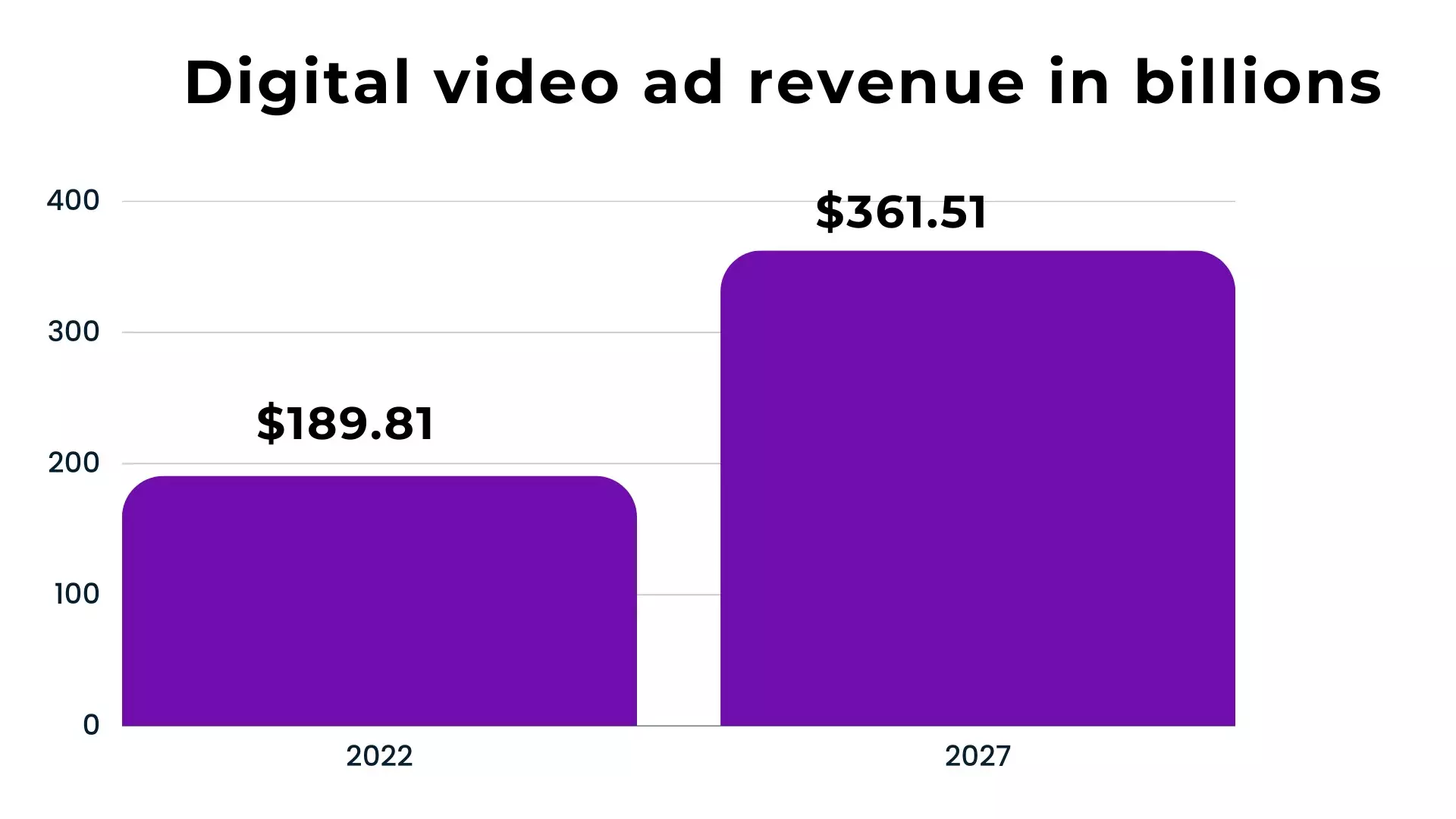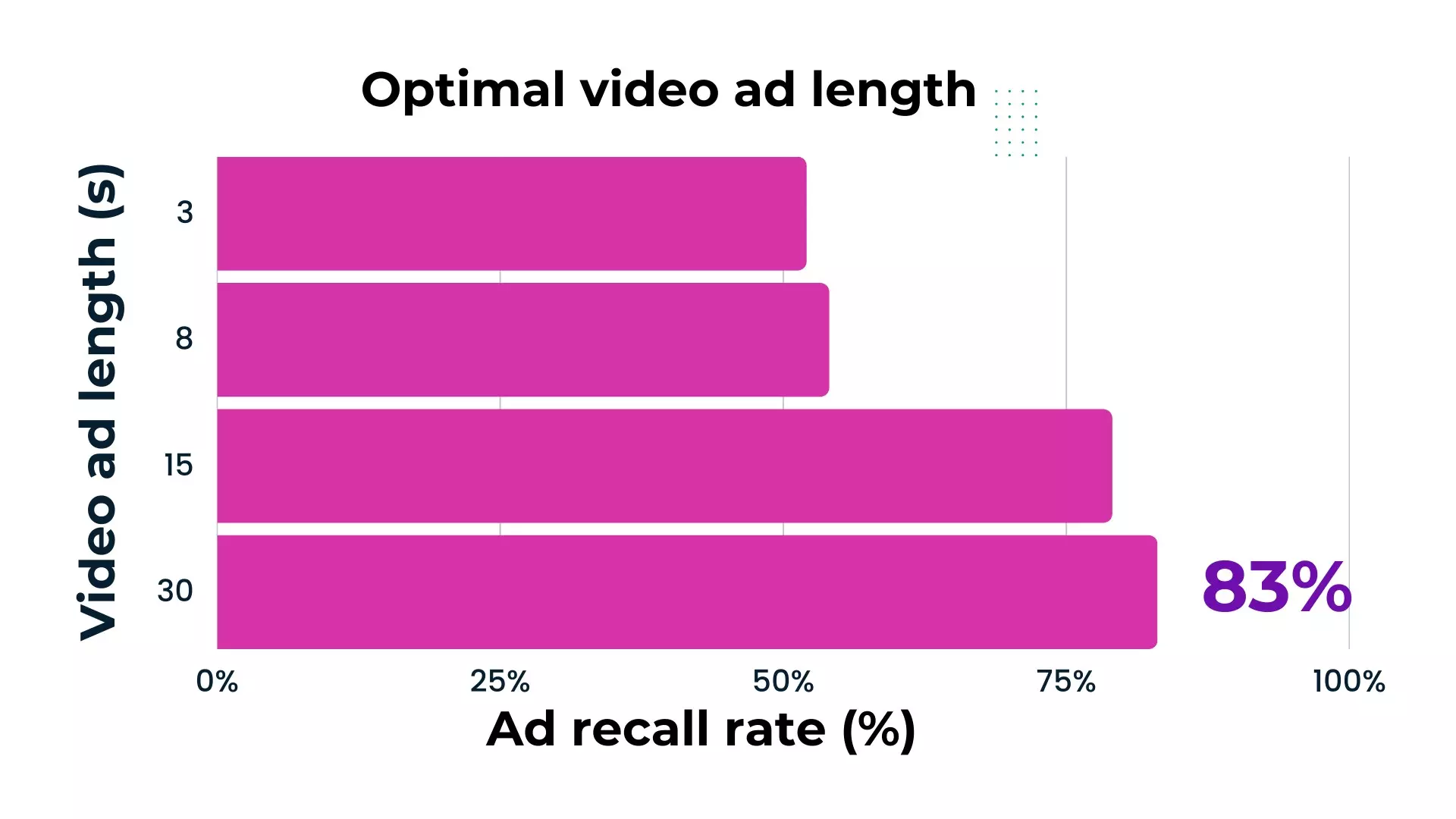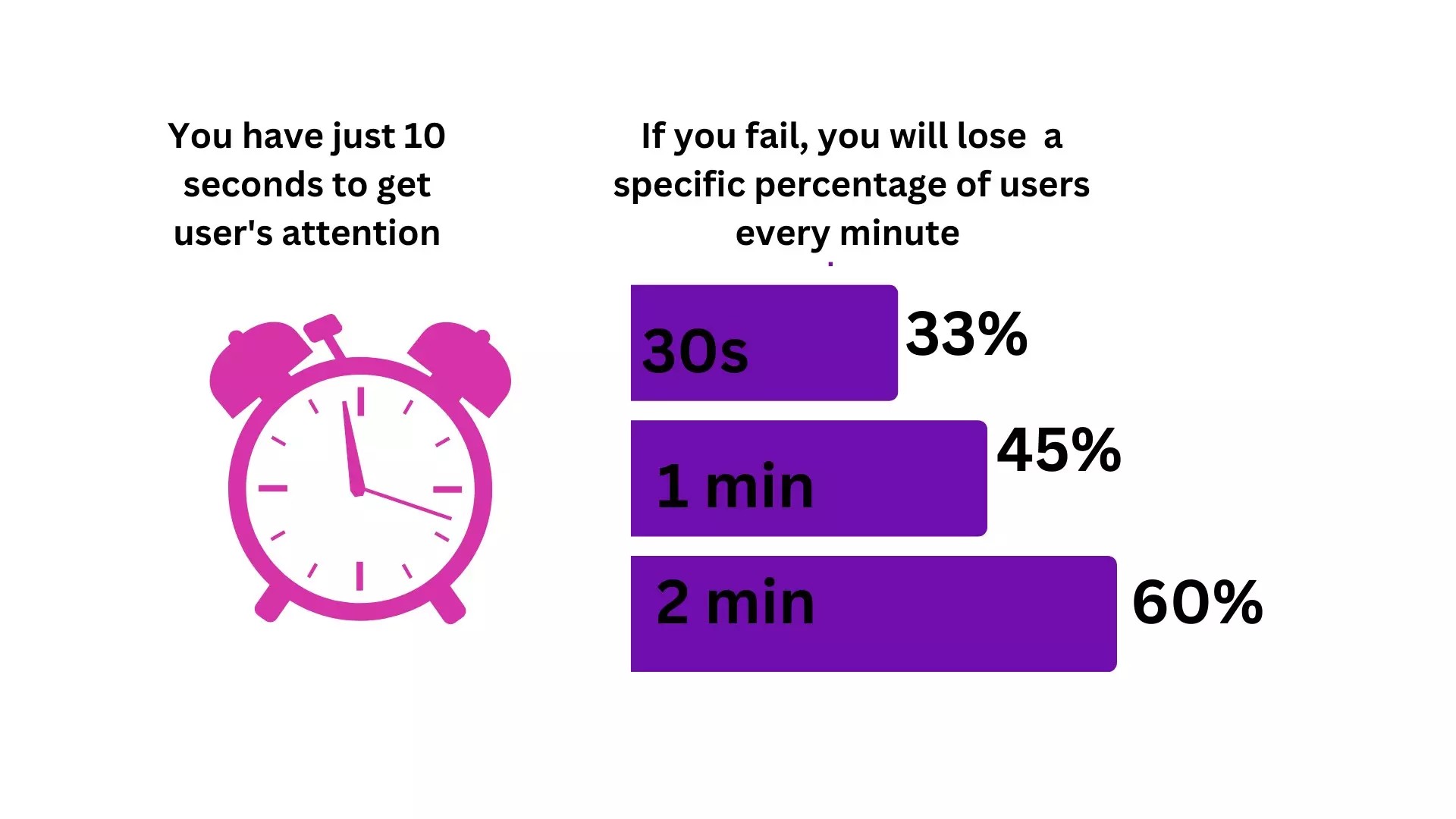Video is the king of content format and is witnessing unbelievable annual growth. In the U.S., there are 244.4 million digital video viewers, of which 91% of the consumers prefer video content. 92% of the marketers say they got high ROI using video marketing.

The statistical popularity of video redirected the publishers to distribute video content and do video monetization. Generating revenue from content websites is a three-decade-old concept; most publishers slay that with their exceptional strategies.
But when it comes to video monetization, they suffer in making revenue on their website compared to the creators who make revenue on third-party platforms like Facebook and YouTube.
So, to help you get started, here we are with the challenges in video monetization. We will help you combat these challenges with the best video monetization strategies, actionable tips, and suggestions.
Table of Contents
Challenges in Video Monetization
Even though the video website drives higher engagement and money through the video ads, there are challenges you need to face and conquer to see better ROI.
- Cost and overhead: Video has been seen as the ideal form for driving high user traffic. However, creating and publishing videos is more expensive than content publishing. You must find talent, resources, and tools to create video content. Things will not end there, and you need to take care of technical factors like a video player and a good server that can run videos seamlessly on the website.
- Lower fill rate: You will undoubtedly display video ads on the website to make money. Video ads have a lower fill rate due to the lower demand than banner and display ads. Despite the high CPM that video ads possess, the RPM of a single page will be low due to the restricted demand for video inventory.
- Page latency: you cannot load the video content along with ads easily like the written content. It needs extra technical work and elements like a video player. A delay in loading will hurt UX and might encourage them to go for the next site or use ad blockers.
- Video ads are highly intrusive: Whatever you do to show video ads in video content, such as playing without sound, or equipping video with non-invasive elements, thinking it will not disturb the user to see the actual content. But actually, it intrudes on the user experience and decreases user engagement.
Video Monetization Tips for Publishers
As a publisher, you must stay on top to use the best ways and tips to monetize your video website. In that way, you can overcome the cost and overhead of creating video content and the challenges posed by video monetization.
The following tips include ways to monetize your video content and the best practices to follow around video content creation and distribution that influence revenue and ROI.
Paywall
A paywall is the common video monetization strategy. The user pays a certain amount to access your content library. The content ranges from informational videos to entertainment videos. Increasing user traffic who pays money for your content is not easy.
It depends on many factors, like the quality of your content, how exclusive it is, how frequently you post it, and how you create engagement with it.
Putting your content behind the paywall as soon as you start your video website is not advisable. You must first create a name for yourself in the specific industry, attract targets, gain loyal users, and then put up a paywall. The successful examples of a video website with a paywall are Business Insider, The Washington Post, The Atlantic, etc.
Sponsorship content
Distributing sponsorship content promotes the brands or services that entered a sponsorship agreement with you. They pay you to display their brand name on your website, place their product in the video, or promote their product in the video as a personal user.
In sponsorship, the brands pay for access to your user traffic. You will get to promote a different range of products according to your user strength. Nowadays, sponsorship content is losing the trust of the users. But you can combat that with the strong video content you deliver.
Display video ads
Showing ads on your video website is the most effective form of video monetization. The ad tech industry has grown fast; publishers now use programmatic advertising to display website ads. It has become a few-millisecond process and occurs in real-time to get high demand for ad slots.
Because video ad slots improve CTRs and conversions, the ad spend on video advertising has increased from US$36 billion to US$50 billion between 2019 and 2023.

Concerning the spending, the video ad revenue also soared to US$189 billion in 2023 and is projected to reach US$361 billion in 2027.

Putting video ads on your website through real-time bidding takes a lot of technical work. You should connect with a good programmatic monetization partner. They will connect you to the best demand partners and get the highest value for video ad slots.
Along with placing video ads, you need to optimize certain factors of ads to get high CPM, CTR, and CPAs for video ad slots. The first factor is the length of the video ad. The optimal length of the video ad is 30 seconds. The ad recall rate of a 30-second video ad is 83%.

Regarding the ad type, you can choose in-stream and out-stream video ads. For a website with only videos, in-stream videos are better. Out-stream ad videos perfectly fit a website with videos and written content.
In in-stream, you can place ads at pre-roll, mid-roll, and post-roll. Mostly prefer pre-roll ads as they are highly non-intrusive and have the best ad completion history. Choose the place according to the user behavior, and displaying one or two ads in a video stream is optimal.
Besides optimizing video ad delivery, you should avoid bad ad-serving practices that hurt user experience and engagement. The bad practices include playing video ads with sound, synchronous loading of ads and content, not providing a skip option, and displaying non-linear ads that intrude on user interaction with the content.
Choose the best video player
Users want their content to load fast. So, focus on delivering the video content fast with the best players and optimize the factors of the video players. You can drive better user engagement, traffic, and CPM. It will ultimately help improve your other monetization strategies like ads, paywalls, sponsorship content, and affiliate marketing, thereby high ROI.
So, choose the video player according to the following:
- Choose the player with the best navigational options like play, stop, forward, and video settings
- They have to provide at least basic branding options and a compulsory monetization toolkit
- Check whether the player you choose gives access to the content libraries. Content libraries let you make videos automatically with content written on blogs or websites
- The player has to support various video formats, such as HLS, VAST, and VPAID. A Video player that provides hosting is cool.
Video player placement and size
When you are not a publisher who only displays video content but a mix of video and written content, choosing where to place the video player and its size is important.
- You have to look at your website metrics to place the video player. Choose the page with high traffic and then again find the well-trafficked area of the specific.
- In the ad tech world, we believe that above the fold is for premium inventory, and below the fold is just to ignore. You should observe your users’ behavior to know where they spend most of their time.
- The content is the key here. If your users focus more on the content below the fold, you should include that area in your premium inventory.
- You can also try placing your video player in two ways: on-page load and on scroll. You can load videos on the top of the page and on-scroll to catch the user’s attention. On-scroll is a kind of sticky video. When the user scrolls down the page to see other content, the video sticks to the left or right of the page. Thought leaders like CNN, Forbes, HuffPost, USA Today, and TIME display video content on-page and on-scroll.
- The size of the video player also matters in driving traffic. Big video player catches the attention of users fast. It increases viewability and, thereby, the CPMs of the video ads.
Relevant content
Content matters a lot. So, strive hard to distribute high-quality and relevant video content. Give the information they want to consume. It will make them engage with your videos more, increase the ad viewability, and thereby, the opportunity to serve ads and monetize.
The attention span of users is decreasing. You have only 30 seconds to attract and engage the audience until the video ends. Failing to do so, you will lose 33% of users after 30 seconds, 45% after a minute, and 60% after 2 minutes.

Make it available across devices
Making the content compatible across devices is paramount for publishers to monetize better. According to a Statista survey, around 60% of people use mobile devices to consume content. You need to do cross-device monetization to reach a wider range of audience and achieve high ad viewability and higher CPMs. You can also use AMP to build your website, which makes your website compatible with both website and mobile.
Video header bidding
Since you are displaying video ads on the website, you will have a partnership with programmatic service providers. You can ask them to implement video header bidding for you.
Header bidding is a real-time auction process that starts from the publisher’s website by sending ad requests to SSPs and ad exchanges (AdX). From there, Adx runs an auction and gets the highest bid from the connected demand partners for the ad inventory. Then, it retrieves the ad creative of the highest bid and renders it on the website. This process requires a JavaScript code embedded in the header of the website. It evokes the auction process.
The process of video header bidding is the same as the header bidding with just one different element video player. The video player serves as a path to send video ad requests and retrieve video ad creatives to run on the website. Many programmatic partners help you with getting the best video player.
It is a quick process and often increases overall ad revenue. It also allows the publishers to grab high bid demands apart from walled gardens. Header bidding has a high fill rate, increasing the demand for your inventory and, thereby, the highest possible CPM.
Finding Which Is Right for You?
When you start posting videos on your website or when you are starting a video website, you have to focus first on the content. Giving relevant content is the initial strategy you must follow to use other strategies in the list.
Content rules the internet, and quality content grabs the user’s attention. If you manage to grab the user’s attention, you will see people buzzing into your website. Study their behavior, make changes to your website, increase the authority of your content, integrate interactive elements to your website, and gain a loyal user count.
After that, you can try all the tips mentioned in the blog. To show video ads on the website, partner with programmatic solutions. They will bring revenue to your table with better ad management and new technologies. You can use the paywall initially for the exclusive content. You can even use pay-per-view for the best content you have.
Make deals with the best brands that match your niche to deliver sponsorship content and earn more revenue. Optimize the factors around optimal video delivery. Take care of the website’s technical issues in and out so it won’t hurt the base of website revenue, i.e., user experience.
Do whatever you can to improve user experience and engagement to make the most of video monetization despite the cost and complexities incurred in creation and distribution.























